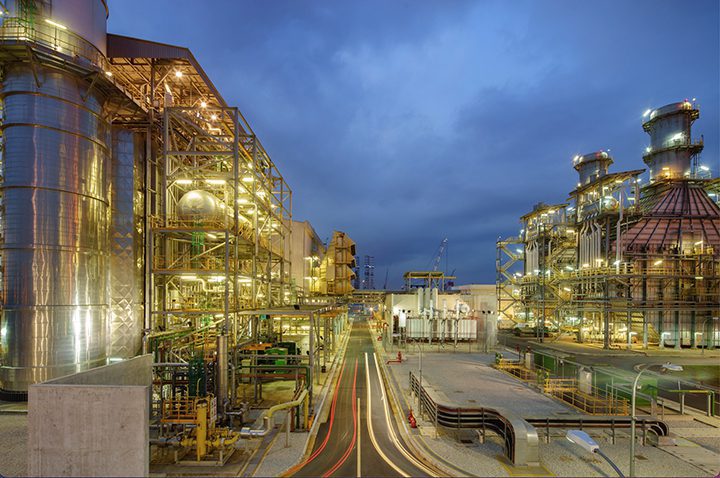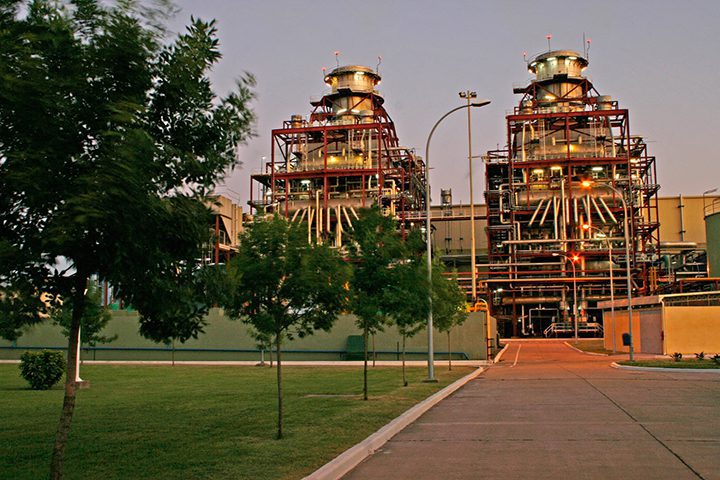Years in the Making, GE’s Recent GT26 Gas Turbine Upgrade Exceeds Expectations
GE recently announced the completion of the first implementation of its GT26 High-Efficiency (HE) upgrade for the GT26 gas turbine fleet. The work was done at Uniper’s Enfield Power Station (Figure 1) in north London.

The upgrade was installed to improve the performance and extend the maintenance interval of the combined cycle plant, according to GE. A specifically engineered instrumentation network with more than 2,000 sensors was used to collect data from selected components and systems of the gas turbine, including the compressor, combustor, turbine, and cooling systems during testing. GE’s engineering team said the data confirmed both efficiency and power output exceeded expectations. Operability, combustion, aeromechanics, and key engine parameters were all within the acceptance criteria, allowing the unit to be released for commercial operation.
“We were pleased to work with GE to enhance our Enfield plant’s competitiveness with the GT26 HE upgrade. Increasing efficiency and output, whilst lowering carbon emissions, operational, and maintenance costs, is crucial for the long-term success of our fleet,” Simon Balmer, operations director for Uniper’s gas turbine fleet, said in a statement issued to POWER. “As the first power producer to receive this technology, [we] checked the accuracy of the modelled configuration data compared to actual performance, and the results have confirmed that the upgrade has met the expected benefits in terms of performance and efficiency. This is a good example of the mutual value gained from our long-term collaboration with GE.”
A Lengthy Development Process
The GT26 HE upgrade has been years in the making. GE added the GT26 frame to its F-class gas turbine portfolio when the company acquired Alstom in 2015, and it went to work on the upgrade soon thereafter. “We started working on this upgrade almost four years ago now,” Amit Kulkarni, head of product management for heavy-duty gas turbines with GE Gas Power, told POWER during an exclusive interview.
“The idea behind it was we had a lot of HA technology that we were leveraging and incorporating into our new HA franchise,” he said. “We took some of the learnings from the HA and looked at the GT26 fleet across the globe, and it was very clear that we wanted to go try a performance improvement with this product—for this frame—both in terms of efficiency, output, and flexibility.”
One big difference between HA technology and that used in F-class machines relates to firing temperature—historically, the F-class has had a much lower firing temperature. “What we brought from the HA side was 3D aero design on the compressor, which is highly efficient. We brought in 3D manufacturing—additive manufacturing techniques—on the combustor in the GT26, and we also made changes to the turbine both in terms of cooling and coating,” Kulkarni explained. “On the HA with the kind of firing temperatures you’re talking about, we have been developing a lot of new cooling technologies as well as coatings—thermal barrier coatings, that is—and we were able to take that and bring into the F-class machine.”
He continued, “So, with all of these technologies that we brought together into this upgrade for the GT26, it’s actually our very first F-class product that’s entering H-class efficiency—almost 60%—which is something that we, of course, take pride in.” GE’s 7HA gas turbine has set efficiency records exceeding 63%, but Kulkarni said this is “the first F-class machine that gets us into that regime, thanks to all the technologies that I just mentioned.”
GE launched the GT26 HE product to the market almost two years ago, with the immediate intention of installing it at the Enfield plant. The upgrade was expected to be completed last year, but the COVID pandemic resulted in some delays. Still, the company is proud of the accomplishment.
“I’m immensely proud of what the team has done,” Alex Evans, GT26 HE global sales leader with GE Gas Power, told POWER. “I look at all the engineers that worked on this—hundreds of engineers, you know, millions of man-hours—and seeing it deliver and do what we said we set out to do, which is super ambitious, actually delivering and making our customers money. It’s a really, really great achievement.”
A Variety of Reasons to Upgrade
In addition to the Enfield upgrade, GE announced on July 20 that two more plants had signed contracts to implement the GT26 HE upgrade. Enel Argentina SA will upgrade its 755-MW Central Dock Sud plant located in Buenos Aires, and Keppel Infrastructure will upgrade its Keppel Merlimau Cogen unit in Jurong Island, Singapore (Figure 2). Yet, the reasons for the upgrades vary.

“What’s interesting is that we’re seeing the uptake around the world all with different kind of value stories,” Evans said, “because you’re delivering high efficiency, of course, at the baseload point where Enfield is getting a lot of it, but you’re also getting an awful lot of part-load efficiency increase across the load range—up to a percent, basically a percentage point—and in Singapore, that’s highly valued, because those guys have to back off a little bit from the baseload in order to provide spinning reserve and to allow for a kind of ceiling that they can go up to. And so, that was a strong selling point in the Singapore one. In Dock Sud in Argentina, those guys were about the power and they were about the maintenance interval extension, because they also get a quite a chunky power boost as well with the HE, but also you get an extended interval extension.”
Evans continued: “One of the things that we brought into the picture that GE has always done was a kind of box concept, which is associated with maximizing the interval and the interaction between the weighted cyclic events and the operating hours—so basically, the starts, operating hours—by leveraging GE’s experience to do that, we were able to maximize the intervals. So, Dock Sud is going to get an extra year or two between its major inspections now—extra, on top of the three or four years we would typically do. So, it’s fascinating that HE is adding value across the world and customers are taking it up for various reasons, but always because it’s delivering significantly on that particular value stream.”
“We selected GE’s GT26 HE solution because of its excellent part-load efficiency and its fuel-flexible combustion system, the most advanced solution ever introduced on a GT26 gas turbine,” Cindy Lim, CEO of Keppel Infrastructure, said in a statement issued to POWER. “With this innovative upgrade, our power station will benefit from improved efficiency with a lower carbon footprint, in line with the Keppel Group’s Vision 2030 sustainability goals.”
“GE’s GT26 HE upgrade blends cutting-edge technology from GE’s industry-leading F- and H-class fleets and it will help us produce more power, while reducing CO2 emissions per MW,” Juan José Marcet, general manager of Central Dock Sud (Figure 3), said in a statement issued to POWER. “Thanks to this significant power increase, we will fully decommission our high-fogging system, leading to substantial cost savings. In addition, we will benefit from the HE’s dual-fuel capability, allowing us to burn diesel backup fuel in winter in case of a natural gas shortage.”

—Aaron Larson is POWER’s executive editor (@AaronL_Power, @POWERmagazine).